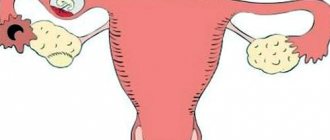Separation of the rectus abdominis muscles, or diastasis, is a common problem affecting mostly women. According to statistics, 70-100% of women develop this pathology in the third trimester of pregnancy. Normally, after childbirth, the structures should return to their original position, but in approximately 30% of cases this does not happen. A gap remains between the muscle tissues, which causes a bulging, flabby abdomen and provokes more serious consequences. That is why it is important to know how to determine diastasis of the abdominal muscles at home, which doctor can help, and what treatment methods modern medicine offers.
What is diastasis
To understand this concept, it is necessary to briefly outline the structural features of the abdominal muscles. In the center of the abdomen is the rectus muscle. It begins in the lower abdomen and extends to the pubic bone. Consists of two sections that are connected in the center by loose fabric. This connective tissue is called the linea alba.
As a result of prolonged and strong tension of muscle structures, intra-abdominal pressure increases. Weak tissues of the white line cannot withstand the load and begin to diverge. At the same time, the distance between the sections of the rectus muscle increases, they diverge to the sides and move several centimeters away from each other. A kind of furrow is formed, and when tense, the stomach protrudes unnaturally. Pathological discrepancy can form under the navel, above it, or have a mixed form.
The pathology should not be confused with a hernia of the white line or with an umbilical protrusion. It does not threaten to infringe on internal organs. But at the same time, even at an early stage it represents an aesthetic problem, since diastasis of the rectus abdominis muscle is much more often determined in women than in men.
Depending on the degree of discrepancy and the size of the formed distance, diastasis is divided into three degrees:
- first - the distance between sections is from 2.5 to 5 cm;
- second - the discrepancy reaches a gap of 5-8 cm;
- third - the size of the furrow between the sections exceeds 8 cm.
This classification allows you to understand how to determine the degree of muscle diastasis even at home.
Pathology can also affect other muscle structures of the anterior abdominal wall. Depending on what surrounding tissues are involved in the process, four types of diastasis are distinguished:
- A - classic form, in which only the rectus muscle diverges;
- B - loss of tone in the inferolateral muscle sections;
- C - appearance of expansion in the area of the xiphoid process, ribs;
- D - curvature of the waist line.
Service
Why do girls have a protruding lower abdomen and what to do?
Olga Shuppo, scientific director of the Grand Clinic, gave a comment to the Live portal
Link to original source
The stomach is one of the “popular” problem areas for women. This is due to the characteristics of lifestyle, genetics, and hormonal levels. Sometimes the lower abdomen can bulge even in slender girls. Why?
Protruding lower abdomen in women: main reasons
Let’s not touch on the topic of excess weight now: if your BMI is significantly higher than normal, a slightly “sticking out” lower abdomen may be a completely natural consequence of this. If you are generally slim, but your lower abdomen still bulges noticeably forward, you may need to undergo a comprehensive examination.
In general, women are more likely to accumulate fat tissue in the abdominal area. This is due to evolution. “In men, fat is usually evenly distributed throughout the body, while in women it accumulates zonally,” explains Vladimir Kuzelin, Candidate of Medical Sciences, sports medicine doctor at the MEDSI Clinic in Izhevsk. “Plus, there are differences in the structure of adipose tissue. In men, adipose tissue is denser, in women it is looser. In men, the connective tissue that surrounds the adipose tissue is denser; it simply prevents the adipose tissue from “bulging” through the skin. But in women, connective tissue does not have such advantages; it immediately leads to the appearance of cellulite.”
“The fat layer in women forms in this area faster than in men. The subcutaneous fat layer is designed by nature as a shock absorber to potentially protect the pelvic organs and fetus from external influences. It is also a kind of reservoir of the hormone estrogen, which is responsible for reproductive function,” adds Olga Shuppo, scientific director of the Grand Clinic network of immunorehabilitation and preventive medicine clinics.
This parameter is set by nature. “More precisely, the female hormone estrogen, which triggers the process of weight gain in women. This is due to the reproductive function of a woman, fat in the lower abdomen acts as protection for the fetus,” adds Leonid Zasedatelev, a specialist in rehabilitation and posture correction.
Here are the main reasons why women may have a protruding lower abdomen.
Postural disorders
"Protrusion" of the abdomen forward can be caused by hyperlordosis. “The spine has natural curves (kyphosis and lordosis), which are formed in connection with upright posture; they are necessary for shock absorption,” explains Vladimir Kuzelin. — In the lumbar spine, the forward bend is called lordosis. Normally, its size ranges from 3 to 5 cm; if the bend is more than 5 cm, hyperlordosis occurs. At the same time, our back muscles spasm, but our abdominal muscles stretch. Plus, hyperlordosis bulges forward, puts pressure on the internal organs, and they put pressure on the inner wall, which also leads to protrusion of the lower abdomen.”
Hyperlordosis can be congenital or acquired - for example, due to an abnormal gait pattern.
You can find out whether you have hyperlordosis yourself. “To do this, you need to stand against the wall and press your back, shoulders, feet and head tightly against it,” notes Maria Belyaeva, nutritionist, health-coach. — Pay attention to the distance between the lower back and the back. If your palm passes smoothly through this area, you most likely have hyperlordosis.”
Poor posture can be corrected by physical exercise and massage practices, which we will discuss below.
Prolapse of internal organs
As they descend, the abdominal organs shift from their place, causing the lower abdomen to visually protrude forward. “This can be caused by weakness of the abdominal muscles, pelvic floor and ligaments,” explains Vladimir Kuzelin.
Weak pelvic floor muscles can also lead to a protruding lower abdomen. “The pelvic floor muscles support the internal organs and are involved in maintaining intra-abdominal pressure; their weakening means prolapse of the internal organs,” says Leonid Zasedatelev.
Diastasis
This is what is called the divergence of the rectus abdominis muscles. “In this case, they are not on the same level, not parallel to each other, but diverge. This leads to the formation of a round belly,” says Vladimir Kuzelin.
Gastroenterological diseases
These include chronic constipation and gas formation. “In this case, the stomach will look like a balloon. Usually it looks normal in the morning, but throughout the day it “puffs up”, especially after eating. The most interesting thing is that the scales do not display this. Frequent gas formation can be the cause of bacterial growth syndrome, or hidden intolerance to foods, for example, those containing gluten or lakotz,” adds Maria Belyaeva.
Endocrinological disorders
We are talking about hormonal imbalances. “In menopausal women, the production of progesterone and estrogen decreases, which manifests itself in the form of deposition of excess fat in the abdominal area,” says Vladimir Kuzelin. - You can also highlight polycystic ovary syndrome, which leads to local deposition of fat in the abdominal area. The absence of thyroid hormones at the proper level leads to a decrease in lipolysis, impaired lipid breakdown and, unfortunately, immediately contributes to the accumulation of fat.”
Thus, thyroid problems can lead to bulging of the lower abdomen.
Lifestyle
Lack of sleep and prolonged periods of stress provoke the production of cortisol. “It causes the body’s resistance to another hormone, insulin, which is responsible for transferring carbohydrates and blood sugar to the “depot” - the liver. Because of this, sugar from the blood passes into fat mass and leads to abdominal, abdominal obesity,” adds Vladimir Kuzelin.
Gynecological disorders
A large ovarian cyst or uterine fibroids can lead to protrusion of the lower abdomen.
Oncological diseases
Unfortunately, a bulging lower abdomen can be a symptom of a dangerous disease. “A protrusion of the abdominal cavity can be caused by intestinal cancer,” warns Vladimir Kuzelin.
Weakness of the abdominal muscles
Stretched and weak abdominal muscles can lead to protrusion. “If you pump up your abs, this is not a guarantee of a solution to the problem,” explains Maria Belyaeva. — An indicator of strong abs is cubes, but they can also be located on a bulging belly. The transverse muscle, which is located under all other muscles, is responsible for holding the abdomen. Only it can reduce the size of the abdominal cavity.”
To solve the problem in this case, Maria advises regularly performing the abdominal vacuum exercise.
“Also, in women with this feature, the interaction of myofascial chains may be disrupted - this is a stabilization system, which is a combination of certain muscles located along certain lines of mechanical tension of the connective tissue, which arises due to the influence of static and dynamic load,” says Olga Shuppo. - As a rule, the anterior myofascial chains will be shortened in this case. This leads to disruption of the biomechanics of the spinal region, causes shortening of the torso flexors, and changes the location of the pelvis. Thus, the abdominal organs are forced to hang over the inguinal fold.”
Among other factors, experts also highlight heredity, unbalanced diet, and bad habits.
Protruding lower abdomen: what to do
The key here is to determine the cause of the protruding belly. If you do not have hyperlordosis (and you found this out as a result of a home test), but have any accompanying symptoms (pain in the lower abdomen, discomfort after eating or defecating, constipation, etc.), experts recommend visiting a general practitioner who will prescribe diagnostics.
The solution to the problem must be comprehensive. “If we encounter this pathology, we need to perform the appropriate diagnosis - find the main causes. If this is hyperlordosis of the lower back, a consultation with a physical therapy doctor, an orthopedist, a traumatologist, and an x-ray will help with this,” says Vladimir Kuzelin. — If we have diastasis, prolapse of internal organs, we will need a consultation with a surgeon and an ultrasound. If these are clinical manifestations of endocrinological disorders or gynecology, then we need consultation with specialized doctors.”
What methods can be used to solve the problem? Exercise therapy or health training, massage and, of course, lifestyle correction are often prescribed. “In addition to physical training, we can recommend a balanced diet, appropriate microelements, drinking regimen, quitting smoking and alcohol,” sums up Vladimir Kuzelin.
“In addition, visceral abdominal massage techniques can be useful, with the help of which specialists put internal organs and systems in place, improve lymph flow - this allows you to remove excess swelling inside and straighten the stomach itself. As an additional therapy, they also resort to methods of myostimulation on the abdomen. This is a hardware technique where weak electrical impulses are applied through special electrodes, promoting muscle contraction and burning of excess fat,” adds Olga Shuppo. “If there is excess subcutaneous fat, lipolytics can be used - injections that help break down excess fat, hydromassage, which effectively drains the entire body and helps reduce swelling.”
The most important step here is to determine the cause. “It depends on what strategy to choose to improve the situation,” says Leonid Zasedatelev. - If hormones are within normal limits, then it makes sense to train the pelvic floor muscles and abdominal muscles - this will help support the abdominal organs. You can also correct your posture with the help of a specialist, if necessary. It makes sense to adjust your diet and pay attention to your emotional state, perhaps the presence of stress and it’s worth working with it to improve the physiological processes associated with psychosomatics.”
Experts advise approaching the problem of a bulging belly thoughtfully and thoroughly. You shouldn’t immediately go on a strict diet or work out your abs to the point of fainting - perhaps the reason is not muscle weakness at all.
Suturing of diastasis
Diastasis is a condition in which the distance between the rectus abdominis muscles increases. There are two methods of performing the operation - tension and non-tension. The rehabilitation period is relatively easy. At first there is swelling, hematomas, and pain. The first ones gradually go away on their own, and the pain is relieved with a drug prescribed by the doctor. Cost of the operation:
from 170,000 rubles Make an appointment with a doctor
More about the operation
Why do internal organs drop?
There may be several reasons for the prolapse of internal organs:
- previous injury to the coccyx;
- lifting weights;
- pregnancy;
- childbirth;
- trampolining.
Tailbone injury is the main cause. Its mechanism is as follows: when falling on the tailbone and sacrum, the spine stops first, and the internal organs continue to move by inertia, and with a strong fall, the ligaments supporting the intestines are sharply stretched and lengthened. This leads to prolapse of the complex of internal organs. Other reasons make the situation worse.
The condition can be complicated by the lack of animal food, excessive thinness, and the presence of endocrine diseases, in which connective tissue is weakened.
How to strengthen your abdominal muscles? 5 abdominal exercises Read more
Causes of abdominal muscle diastasis
The main reason for the discrepancy is the excessively high pressure that occurs in the abdominal cavity. At the same time, the prerequisites for increased intra-abdominal fluid are of different nature. These include:
- Loss of muscle elasticity as a result of rapid weight loss.
- Excessive physical activity.
- Dysplasia is the abnormal development of tissues and organs. In addition to diastasis, it is accompanied by many additional manifestations: hernia, varicose veins, hemorrhoids, etc.
- Pregnancy. As a result of hormonal changes, collagen production is reduced, tissues lose elasticity and become loose. At the same time, the enlarged uterus significantly increases pressure on weakened muscle structures and the linea alba.
In 60% of cases, diastasis in women is associated with pregnancy. Pathology begins to develop in the middle of the second trimester. It is at this time that the muscles are stretched under the influence of increasing abdominal pressure. Normally, after childbirth, the uterus restores its previous size, and the width of the white line returns to its normal value of up to 2 cm.
However, in many cases, the recovery process is complicated by concomitant factors that prevent the tissues from returning to their previous position. These factors include:
- mature age of the woman in labor;
- excess weight before and during pregnancy;
- the fruit is too large;
- number of previous pregnancies and births;
- type of pregnancy (one fetus or several);
- complications during pregnancy;
- too rapid return to active physical activity after childbirth.
Diastasis can also occur in children, especially premature babies. The key prerequisite for the development of pathology is the failure of the child’s muscles and tendons. In this case, most often the defect is eliminated on its own during the first year of the baby’s life. During this period of time, the muscles acquire tone, the ligaments become strong. Only children with Down syndrome are at risk of maintaining the discrepancy.
In only 1.5% of cases, diastasis is diagnosed in men. The basic prerequisites are the same as for women: obesity, dysplasia, sudden weight loss. Also, men are more likely to be overly involved in strength training, which not only causes hernias and varicose veins, but also provokes the formation of diastasis.
The main reasons that provoke the occurrence of diastasis
The cause of the disease lies in a long-term increase in intra-abdominal pressure, which is “superimposed” on damage to the structure of the fibers that form the abdominal wall. According to experts, abdominal diastasis in women occurs as a result of the following most common reasons:
Pregnancy. Abdominal pressure increases due to stretching of the abdominal wall and other changes in the body and body of a pregnant woman. Diastasis manifests itself most clearly in multiple pregnancies, the presence of a large fetus, a previous caesarean section, as well as an early start of physical activity after childbirth.
Muscle and tendon incompetence. In mature women, deformation due to tissue failure occurs quite rarely, and, as a rule, occurs as a result of the already mentioned HIV infection (up to 3% of infected patients). At the same time, underdevelopment of the muscle fibers of the abdominal wall becomes one of the reasons for the divergence of the white line in infants. This problem is most often observed in premature babies.
Diastasis in men can be provoked by long-term exposure to such factors as: • work activity associated with frequent lifting of heavy loads; • active sports, which also involves lifting a lot of weight; • excess weight, accompanied by a significant deterioration in muscle tone; • sudden weight loss or gain; • increase in intra-abdominal pressure (for example, with a strong cough, constipation, difficulty urinating, etc.); • hereditary predisposition (for example, genetic weakness of connective tissue).
pixabay.com / (Joenomias) Menno de Jong
Signs of abdominal muscle diastasis
For a long time, the pathology has an asymptomatic course. Manifestations increase as the discrepancy develops and complications appear. And if in women the signs of diastasis of the rectus abdominis muscles are maximally manifested after pregnancy and childbirth, then in men - only when the pathology is already in an advanced state.
The main and most noticeable manifestation of the pathology is a rounded vertical protrusion of the abdomen. If you deliberately tense your abdominal muscles, a groove between the right and left halves of the body becomes visible. At the same time, in men, even with intense strength training, the abs are not sufficiently worked out and do not acquire the desired relief.
If the disease progresses, the pathological structure of muscle tissue and disturbances in muscle function become the cause of other, more dangerous characteristic manifestations. There are:
- pain in the spine, lower back;
- posture disorders;
- increased fatigue;
- dysfunction of the gastrointestinal tract, which is accompanied by heartburn, belching, pain, constipation, flatulence.
At the third stage of the pathology, dangerous complications are possible, which manifest themselves in the form of:
- ptosis, prolapse of internal organs;
- intestinal obstruction;
- urinary incontinence;
- renal colic;
- feeling of heaviness in the legs while walking;
- muscle atrophy in the abdominal area.
Unexpected reason
When the stomach protrudes and hangs strongly, sometimes it visually seems that the legs are growing from it. What is the reason for this physiological “effect”?
Traditionally, overeating is considered the cause of a hanging belly. But this is far from the truth.
The stomach can stick out and hang in very thin people, because they do not have fat layers to support the insides.
The position of the abdomen does not depend on its size. He may be big, but he is fit.
The main reason for a protruding belly is prolapse of internal organs. The position of the internal organs is determined by two factors: internal and external.
Article on the topic
The abs of your dreams. How to achieve noticeable results?
The internal factor (main) is the ligaments that suspend the viscera to the posterior wall of the abdominal cavity, primarily to the spine. A person can influence them independently only with the help of special exercises.
The external factor is the muscles of the anterior abdominal wall and pelvic floor. Everyone can keep them in good condition by performing special abdominal exercises (with the exception of raising the torso or legs while lying down), training the pelvic diaphragm, and simply maintaining physical activity.
How does a doctor determine the presence of diastasis of the rectus abdominis muscle?
If any of the listed symptoms appear, as well as if there are predisposing factors such as recent pregnancy and childbirth or increased physical activity, you should consult a doctor for examination. You can’t delay your visit; it’s better to see a specialist for prevention than to wait until dangerous complications appear.
Many people do not know which doctor determines the presence of diastasis of the rectus abdominis muscles. You need to contact a surgeon. In most cases, an experienced specialist will be able to determine the pathology using only palpation examination.
For diagnosis, the patient lies on his back, slightly bends his knees and rests his feet on the surface. After this, the surgeon asks you to tighten your abdominal muscles. At the same time, you need to raise your shoulder blades and head. The doctor feels the abdomen, measures the width of the discrepancy, and determines the presence and stage of the pathology. In this case, pronounced diastasis of the third degree is noticeable even in a standing position.
In some cases, the study of the width of the white line is complicated by excess body weight. The doctor refers such patients for an ultrasound examination. This procedure is also prescribed if there is a suspicion of the development of complications: hernial protrusions, displacement of internal organs. In rare cases, radiography or computed tomography is necessary.
How to determine the presence of abdominal muscle diastasis yourself
Diastasis can be determined at home. A simple test will help you do this, during which you need to measure the distance between the edges of the rectus muscle.
To do this, you need to lie on your back on a hard surface, bend your knees. Place one hand under your head and the other on the white line, just above your navel. Then you should relax and raise your chest. In this case, you need to feel the discrepancy between the muscles with your fingertips. The gap is most pronounced between the navel and the xiphoid process. If the discrepancy is greater than the width of two fingers, this should alert you and be a reason to contact a specialist.
This technique is as similar as possible to the approach that a surgeon uses for diagnosis. This is the easiest way to determine diastasis at home without the help of a doctor and instrumental examinations.
Exercise 4.
Starting position: sitting on the floor or on the bed.
- Lean your back against the wall.
- Place one hand on the solar plexus. Exhale and move your navel as far as possible towards your spine, hold it in this position and relax.
This exercise should ideally be performed at least 100 times in one approach, but don’t be alarmed, it will take you no more than three minutes. If you do it daily, after a few weeks you will see the result: the abdominal wall will become more toned.
How to remove diastasis
The treatment regimen for the pathology depends on the stage of its development and the degree of manifestation. At the first stage, it is enough to follow the doctor’s recommendations, which will help strengthen the muscles of the abdominal wall and reduce their discrepancy:
- reduce weight to normal levels;
- maintain a balanced diet with limited consumption of fatty and sweet foods;
- adhere to the daily fluid intake;
- wear a bandage that supports the stomach;
- undergo massage and other physical procedures;
- do swimming, yoga, Pilates or physical therapy.
Physical therapy should be carried out under the supervision of a specialist. He creates a program with the correct load level. Particular attention is paid to the deep transverse and oblique abdominal muscles, which, with an appropriate level of tone, reduce the degree of stretching of the linea alba.
A set of therapeutic exercises is useful even for pregnant women. With its help, you can prevent the development of pathology and speed up the process of postpartum recovery of the body.
Such training takes place without straining the abdominal muscles. It is also not recommended to do exercises while standing, including on your knees or elbows. Such loads are permissible only after restoration of the normal width of the lumen.
In later stages, the discrepancy can no longer be corrected with exercise or massage. Surgical intervention is necessary to return the muscle corset to its place and relieve complications and symptoms. It could be:
- Tensionplasty using patient tissue. The surgeon removes excess connective tissue and stitches the edges of the muscles together. This method is the least preferable, since relapses occur quite often after it.
- Tension plastic using a prosthesis. It involves the same removal of excess tissue and suturing of muscle layers, but is accompanied by additional strengthening using a mesh polypropylene prosthesis.
- Tension-free plastic surgery with installation of a prosthesis. An endoprosthesis is inserted under the stretched area, which serves as a barrier and replaces the weakened structures.
- Combined approach. It involves a combination of tension and non-tension plastic surgery.
The specialist selects the surgical method taking into account the characteristics and degree of development of the pathology, as well as individual factors and the patient’s health status. Full recovery after the intervention occurs within 1 to 3 months. At this time, it is necessary to avoid excess tension, adhere to a diet and wear a special bandage that relieves stress from the operated muscle structures.
How can diastasis be cured?
The good news is that diastasis can be successfully treated, but it is still better not to let your condition reach the point where only surgical intervention can help. As for the initial stage of the disease, in many cases it can be eliminated with dietary nutrition and special exercises. However, in the case of diastasis during pregnancy, these exercises should be performed no earlier than 4–6 months after the baby is born.
The first step to treating abdominal diastasis is to strengthen your abs with exercises. Fortunately, the basic abdominal exercises for diastasis are extremely simple and straightforward, so you can do them almost anytime and anywhere. This is a normal abdominal retraction: you will need to “hold” the abdominal cavity in a depressed state for literally one second, after which you should slowly return to the starting position.
The next workout is as follows: lying on your back, you need to slightly lift your upper body off the floor and hold in this position for about 30 seconds. This exercise must be repeated at least 25 times.
Next, in the same lying position, we raise our legs from the floor. And you can complete this simple health complex by alternately lifting your legs and upper body. Believe me, at the initial stage of diastasis, photos of your stomach before and after such exercises will make a significant difference, not to mention the improvement in your well-being.
pexels.com/pixabay
In addition, during conservative treatment of discrepancy in the linea alba, it is recommended to observe the following: • do not lift or carry heavy objects; • if you need to lift something, you should squat with your legs bent instead of bending over and keep your back straight; • get out of bed on your side, leaning on your hand, and sit down in the same way; • when coughing hard, try not to protrude your stomach.
Prevention of diastasis
To reduce the risk of developing pathology, it is extremely important to systematically follow preventive recommendations. To do this you need:
- adhere to a proper balanced diet;
- lead an active lifestyle, walk more;
- strengthen all muscle groups, especially the muscle structures of the abdomen and lumbar region;
- eliminate excessive physical activity;
- do not lift weights, especially for women;
- strengthen the diaphragm;
- monitor your weight and prevent obesity.
During pregnancy, you need to use special oils, creams, ointments that increase the elasticity and firmness of tissues. After childbirth, it is necessary to carefully monitor the condition of the press in order to detect pathology in a timely manner and, if necessary, seek help from a doctor before complications develop. Treatment of the initial stages of discrepancy is successful and does not require excessive effort from the patient.
Information materials on the site are posted for informational purposes, not self-medication. Any plastic surgery is a surgical intervention. When deciding to have surgery, be sure to consult with a qualified professional.
The role of abdominal taping for diastasis
One of the common methods of getting rid of diastasis is taping - applying special adhesive tapes (tapes) to the abdominal cavity. They are glued according to a certain pattern and support the muscles, protecting them from further divergence. Tapes are especially good for physical activity. In addition, tapes for diastasis increase the functionality of abdominal tissues, reduce pain throughout the entire period of wearing the tapes, accelerate the restoration of damaged fibers, normalize blood circulation and muscle tone.
pexels.com / Maksim Goncharenok









